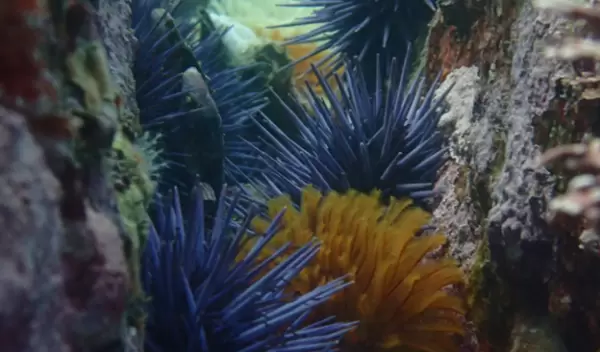
Destruction and recovery of kelp forests driven by changes in sea urchin behavior
A dramatic outbreak of kelp-eating purple sea urchins along the Central Coast of California in 2014, leading to a significant reduction in the region's kelp forests, was driven primarily by the emergence of sea urchins from their hiding places rather than an increase in the urchin population. In subsequent years, sea urchin movements enabled kelp forest recovery at sites that had been denuded "urchin barrens."
Those are among the findings of a U.S. National Science Foundation-supported study of sea urchins and kelp forest dynamics in Monterey Bay conducted by scientists at the University of California, Santa Cruz and other institutions. Published in Ecology Letters, the new findings could be helpful in efforts to restore decimated kelp forests along the California coast, said Joshua Smith of the University of California, Santa Barbara.
"As people are thinking about practical ways to facilitate kelp forest recovery, most people would agree we need to reduce the number of sea urchins, but it's also important to consider the role of sea urchin behavior," Smith said.
Smith and co-author Tim Tinker of UC Santa Cruz used 22 years of long-term monitoring data to show that the 2014 outbreak of purple sea urchins in southern Monterey Bay was primarily driven by a behavioral shift, not by a population increase.
Over the next three years, they tracked the foraging behavior of sea urchins in the area, which had become a patchy mosaic of kelp forests and urchin barrens. They found that sea urchin behavior was linked to transitions between the two states in both directions.
"These results are a fascinating example of how the behavior of key species can change the state of an ecosystem," said Cynthia Suchman, a program director in NSF's Division of Ocean Sciences. "This adds a new dimension to our understanding of how predation and grazing affect kelp forests."
A series of major disruptions to California's kelp forest ecosystems began in 2013 with the emergence of sea star wasting disease, which wiped out a sea urchin predator, the sunflower sea star. The next year, an extraordinary marine heatwave bathed the coast in warm water, creating poor conditions for the growth of kelp. That set the stage for the outbreak of sea urchins. Then the rocky reefs where kelp forests grow were covered with purple sea urchins grazing on the living kelp.
Normally sea urchins hide from predators in the cracks and crevices of the rocky reef and feed on kelp detritus that drifts their way on the currents. With reduced kelp productivity due to the warm water, the usual food deliveries weren't happening, while at the same time a known sea urchin predator had disappeared.
"In 2014, they came storming out of the crevices looking for kelp," Smith said. "These were big adult sea urchins that showed up all of a sudden, especially in central and northern California, and that behavioral shift here along the Monterey Peninsula led to these urchin barrens where there had been kelp forest."


